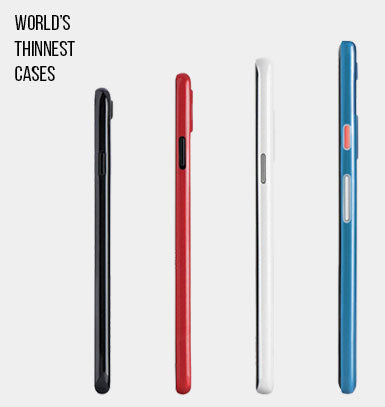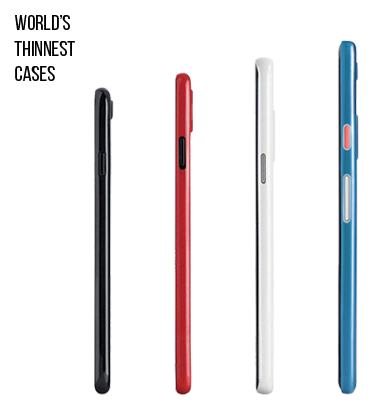Have You Ever Wondered What's In A Smartphone?

Once a luxury, smartphones have become an integral part of our daily lives -- serving as our Wi-Fi internet connections, mobile offices, daily planners, movie and music players, games consoles, and of course, as mobile phones. In fact, in a recent survey by Qualcomm, 37% of smartphone participants admitted to checking their smart device every 30 minutes or less. But, while you may be very attached to your phone, have you ever wondered what's inside it and what those components do?
All smartphones come equipped with a central processing unit (CPU). Under the screen, they also pack a radio, and a battery, as well as buttons and connections through ports that accommodate accessories. You can also expect to find a camera, sensors, considerable storage capacity, as well as RAM.
Central Processing Unit (CPU)
Your phone’s CPU can be considered the brain of your phone. It powers all your phone’s activities, and its capacity will limit how far you can push your phone's capabilities. More powerful phones will be better able to handle HD video and 3D gaming, while less powerful phones will generally support games such as Angry Birds and standard definition video playback.
A phone’s CPU power is measured in MHz and GHz, and is available as single, dual or quad-core. The more MHz or GHz and cores the phone, the more powerful the CPU. Quad core phones are naturally more expensive, but more cores won't always be the best for your needs; many models offer less powerful CPUs as a power-saving feature. Which CPU your smartphone requires will depend heavily on the operating system it uses. For example, iOS phones are more efficient than Google's Android, and can get away with less GHz and cores.
Battery
Battery power is measured in mAh. Combined with its software and processor, your phone’s battery dictates how long your handset will last. However, mAh aren't everything; the phone’s processor has just as much impact on battery life as its mAh capacity. Phones can lose energy due to a variety of reason, such as heat emitted from the phone, radios attempting to access a connection on it, and most commonly, your screen’s brightness.
Storage
Smartphones come with internal storage which is measured in gigabytes, (GB). One GB equals a thousand MB, which can typically store 2000 good-quality photos, 200 songs, or 2 standard definition movies. Some smartphones also offer options to expand their storage capacity by inserting a microSD memory card, providing up to an additional 32GB of memory.
Random Access Memory (RAM)
The more RAM your smartphone has, the faster it will respond, and the better it is at multi-tasking. When you take a break from work to play an app, you are relying on RAM. RAM is used to store program and app information temporarily, and is responsible for carrying out the ‘physical’ running of processes, such as loading a game, running your web browser or playing music.
Radio
Your phone’s radio sends and receives voice, 3G, 4G, Bluetooth or Wi-Fi data. It might also have a CPU chipset-integrated cellular radio, like the Qualcomm Snapdragon S4, or a separately integrated radio, such as the NVidia Tegra 3 processor.
Cameras
Cameras have become a staple of modern day smartphone features. More and more phones are including a camera in the back, and a front facing camera for video chatting. Camera resolution is measured in megapixels, and standard phones now start at 3-megapixels or higher. Lens, sensor quality and autofocus are more important than pixels, however. The phone's camera sensor dictates overall quality and graininess, while the lens quality dictates the clarity of the shot. With quality autofocus, you are able to take a variety of shots, including close-ups and landscapes.
Sensors
Sensors gauge desired light levels, proximity and movement. For example, when you turn your ringing phone upside down, the motion sensor silences it. A light sensor adjusts brightness to save battery life, and a proximity sensor turns the screen off when held to your face, so that on-screen buttons aren't activated in the middle of a call.
While the inner workings and components of your smartphone are important to the smooth operation of your device, they can’t make up for loss of usability due to a scratched or cracked touchscreen. To protect your phone from everyday wear and tear, and damage from drops and bumps, your phone’s insides need protection. Check out Ultimate Shield’s quality screen protectors. We offer a 100% satisfaction guarantee and free shipping.
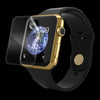 Apple Watch Series 1 / 2 / 3 Invisible Film Screen Protector
Apple Watch Series 1 / 2 / 3 Invisible Film Screen Protector 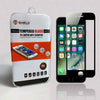 Apple iPhone 7/8/SE (Black) Tempered Glass Screen Protector
Apple iPhone 7/8/SE (Black) Tempered Glass Screen Protector 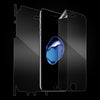 Apple iPhone 7/8/SE Invisible Film Screen Protector
Apple iPhone 7/8/SE Invisible Film Screen Protector  OnePlus 5T Tempered Glass Screen Protector (Black)
OnePlus 5T Tempered Glass Screen Protector (Black) 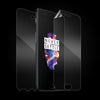 OnePlus 5 Invisible Film Screen Protector
OnePlus 5 Invisible Film Screen Protector 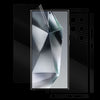 Samsung Galaxy S24 Ultra Invisible Film Screen Protector
Samsung Galaxy S24 Ultra Invisible Film Screen Protector 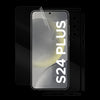 Samsung Galaxy S24 Plus Invisible Film Screen Protector
Samsung Galaxy S24 Plus Invisible Film Screen Protector 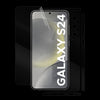 Samsung Galaxy S24 Invisible Film Screen Protector
Samsung Galaxy S24 Invisible Film Screen Protector 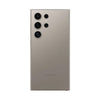 Ultimate Thin Case for Samsung Galaxy S24 Ultra
Ultimate Thin Case for Samsung Galaxy S24 Ultra 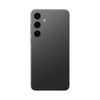 Ultimate Thin Case for Samsung Galaxy S24 Plus
Ultimate Thin Case for Samsung Galaxy S24 Plus 